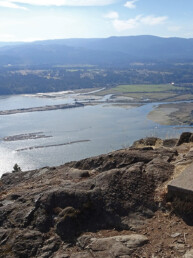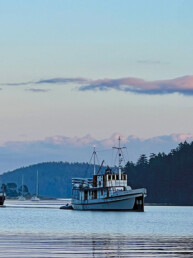Here’s our latest installment from Three Sheets Northwest guest columnist Jim Burgoyne of SalishSeaPilot.com…

That’s the thing about the Broughton Archipelago. To us, in the early 21st Century, it seems like a remote place. You cruise into a bay, and it appears untouched, a gleaming white midden the only hint that once upon a time there was human habitation.

Then you learn that once thousands of people lived along the shoreline, with a cannery, general store, school, steamship landing and First Nations village. The next bay over was a fish buyer and many hand loggers working their stakes. If you are patient, and willing to explore in the trees behind the foreshore, you will eventually find lots of traces of the past.
That describes the unnamed bay southeast of Dead Point on Harbledown Island in the Broughton Archipelago. If you dinghy ashore, behind a rocky beach is the “Monks’ Wall”. The stone walls were so named because they were once rumoured to have been erected by monks building a Buddhist monastery.

In fact, the impressive, moss-covered walls were built by William and Mary Anne Galley who homesteaded on Harbledown Island in the late 1800’s. The stonework was part of a trading post they built, with a grand archway over the entrance which has since collapsed.

The site has been picked over by souvenir hunters, but it’s fairly easy to find shards of broken dishes, rusted hardware and other traces of the Galley homestead if you take time to poke about.
The bay offers anchorage with good protection from the west and north behind Dead Point. The bottom is sticky mud with excellent holding.






